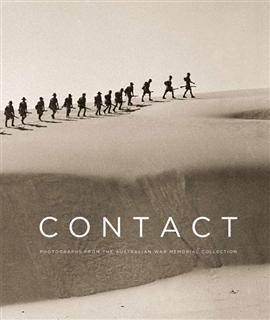Focus: photography and war 1945–2006
Focus: photography and war 1945 – 2006 provided an overview of the historical and aesthetic richness of the Memorial’s extensive photography collection, through the images and experience of the 15 photographers working during the period 1945 – 2006.
This exhibition concentrated on the work of the very best still photographers, whose work goes beyond the mere recording of evidence and demonstrates a unique capacity to encapsulate both the subtlety and the complexity of an event in a single image.
The technological and industrial expansion of photography, film and mass media, dating from 1945, has had a major impact on the public’s appreciation or war and its consequences, due to the quality and proliferation of imagery from official photographers – Military History Unit, Defence Department and the Memorial – freelance photographers, photojournalists and the private images of soldier photographers.
The exhibition was on tour from 18 August 2007 until 1 February 2009.
About the exhibition
Ben Bohane, Australian soldiers secure the beachhead at Red Beach, Honiara, as a bulldozer prepares the way for vehicles to drive off an Army landing craft, 24 July 2003
Photography has since its beginnings been bound in an intimate and changing relationship with war. Whether as a record of events, an analytical tool, or a form of propaganda, photography has played a critical part in forming our response to global and local conflicts. Photographers report the physical impact and the emotional effects of war: the tortured battleground, its deadly aftermath, civilian relief or humiliation, and loss.
The Australian War Memorial’s photographic exhibition Focus: photography and war 1945–2006 offers an overview of the historical and aesthetic richness of the Memorial’s extensive collection of photographs, through the images and experiences of 15 photographers working in the period 1945–2006.
The exhibition concentrates on the work of the very best still photographers, whose work goes beyond the mere recording of evidence and demonstrates a unique capacity to encapsulate both the subtlety and the complexity of an event in a single image.
Selecting photographs for Focus
The Australian War Memorial’s collection of photographs is enormous. The Memorial holds over 900,000 images, produced by thousands of photographers, many of which are searchable on the Memorial’s online collection.
The process of selecting fifteen photographers whose work represents the best of the many thousands of photographs taken after the Second World War from this vast collection was made by a curatorium drawn from the staff of the Memorial’s Photographs section: Patricia Sabine (Head of Photographs, Film and Sound), Ian Affleck (Senior Curator of Photographs), Joanne Smedley (Curator of Photographs), Shaune Lakin (Curator of Photographs), Andrew Jack (Assistant Curator of Photographs), and Ian Jackson (Research Officer).
The curatorium produced a short-list of photographers based on the scope and strength of each photographer’s work. There are many photographers in the Memorial’s collection who made fine photographs; however, we needed photographers who had produced a broad range of pictorially significant work. The curatorium felt that selected photographers should have made a significant contribution to the field of Australian war photography. They should have made a contribution to either the memory of the Australian experience of conflict, or to Australian photographic practice more broadly.
These decisions were very difficult, and this exhibition could have drawn on the work of dozens of other photographers whose work has in some way met these conditions. In the end, photographers were selected on the basis that Focus should include a broad range of photographers, including official photographers covering the war for the Australian defence force or the Australian War Memorial, photojournalists representing the media, and soldiers operating their own cameras in the field.
Contact: Photographs and the modern experience of war

Photographers
- Alan Queale
- Harold Dunkley
- Phillip Hobson
- Ian Robertson
- Mike Coleridge
- John Fairley
- Andy Mattay
- Denis Gibbons
- Tim Page
- Heide Smith
- George Gittoes
- David Dare Parker
- Stephen Dupont
- Ben Bohane
- Allan Cuthbert
- Barbara Isaacson
- Claude Holzheimer
- Allan Lambert
- Lloyd Brown
- Herbert Baldwin
- Charles Bean
- Frank Hurley
- Hubert Wilkins
- Damien Parer
- George Silk
- Vernon Smith
- Herbert Appleby

